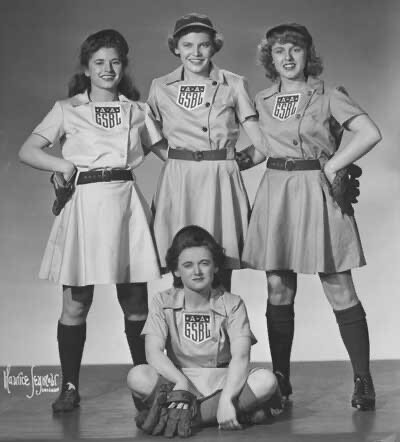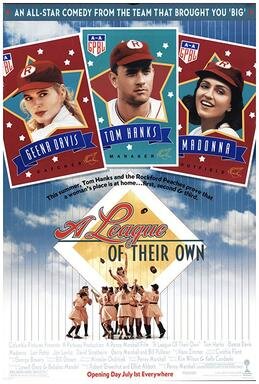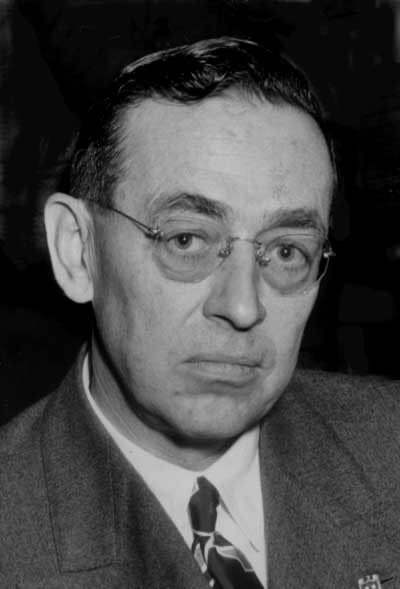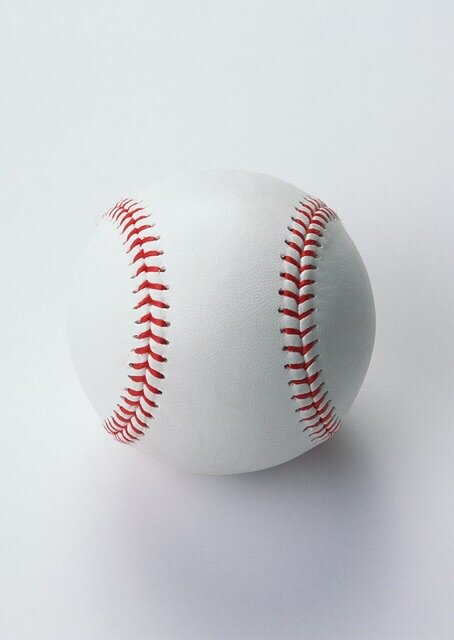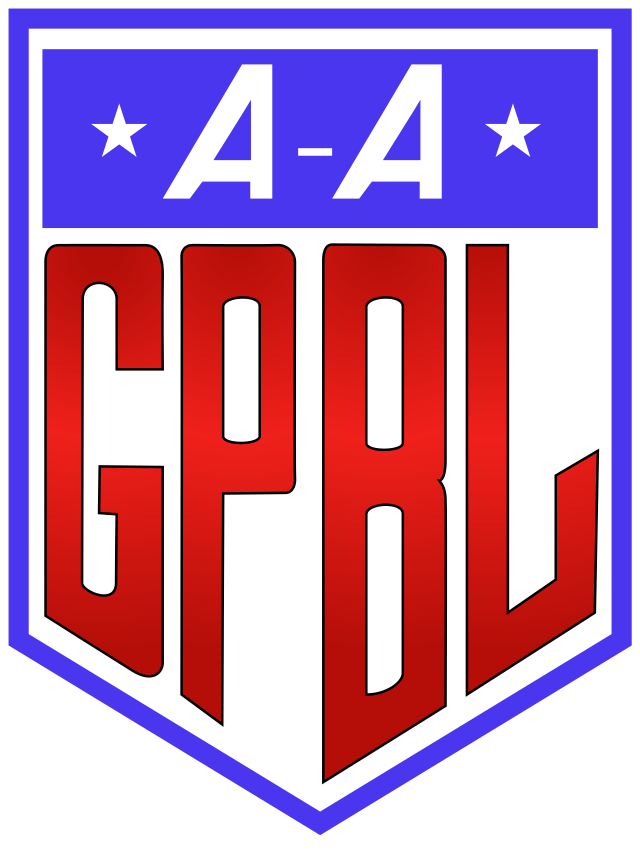First players signed in 1943 - Standing, L-R: Clara Schillace, Ann Harnett and Edie Perlick. Seated: Shirley Jameson. (From Northern Indiana Center for History Collection.)
Most people have seen the 1992 film A League of Their Own, which was directed by Penny Marshall. If you haven’t, March 26 is opening day of the 2020 Major League Baseball season and this month is Women’s History Month. What are you waiting for? If you have seen it, WATCH IT AGAIN!
A League of Their Own is a fictionalized account of the very real All-American Girls Professional Baseball League (AAGPBL), a professional women's baseball league founded by Philip K. Wrigley, Branch Rickey, and Paul V. Harper. It existed from 1943 to 1954. The first league game was played on May 30, 1943. Olive Little threw the first no-hitter in team and league history.
Lois Siegel documented the All-American Girls Professional Baseball League in her film Baseball Girls, which was produced by the National Film Board of Canada.
The AAGPBL grew to 10 teams in the American Midwest with over 600 women players during its 11 year existence. League wide attendance for games peaked in 1948, at over 900,000 spectators.
Philip K. Wrigley
Wrigley got the idea to found the league after the United States entered World War II. Major league baseball executives wanted to keep baseball in the public eye while the majority of able men were serving their country overseas.
The first team tryouts were held at Wrigley Field in Chicago. Over 200 women who had been scouted from amateur softball leagues across the country were invited to try out. Sixty were selected for the league roster. Like all professional sports in America at the time, the 'girls' league was also segregated. No African Americans were recruited or hired. The Women selected were skilled play who fit the league owners’ image of wholesomeness, attractiveness and femininity.
Many of the teams were given feminine sounding names such as the Racine Belles, Rockford Peaches, Milwaukee Chicks, Minneapolis Millerettes, Fort Wayne Daisies, Grand Rapids Chicks, Muskegon Lassies, Chicago Colleens, Springfield Sallies, Kalamazoo Lassies, Battle Creek Belles, and the Muskegon Belles.
The uniforms were designed to be feminine. A typical AAGPBL uniform consisted of a belted, short-sleeved tunic dress with a slight flare of the skirt. Skirts were to be worn no more than six inches above the knee. Players often ignored this rule because a shorter skirt made running and fielding easier. Each uniform had a circular team logo sewn on the front and baseball caps featured elastic bands in the back so they were one-size-fits-all.
Chewing gum mogul Philip Wrigley owned the league from 1943 to 1945. From 1945 – 1951, the wealthy publicist, Arthur Meyerhoff, took over ownership of the league and from 1951-1954, the teams were individually owned.
During the first season, the league played a hybrid of baseball and softball:
1. They used a regulation sized softball (12 inches in circumference)
2. The pitcher's mound was only forty feet from home plate, closer even than in regulation softball and
much closer than the baseball distance of 60 feet, 6 inches.
3. Pitchers threw underhand windmill, like in softball.
4. The distance between bases was 65 feet, five feet longer than in softball, but 25 feet shorter than in baseball.
Major similarities between the AAGPBL and baseball included:
1. Nine player teams
2. The league followed the men's late spring to early autumn season
3. The use of a pitcher's mound (softball pitchers throw from flat ground)
4. By 1948, the ball had shrunk to 10 3/8 inches
5. Overhand pitching was allowed
6. The mound was moved back to 50 feet
As the league progressed, the league rules gradually became more in line with baseball. By the final season in 1954, the league was using a regulation sized baseball, the mound was moved back to 60 feet, and the base paths were extended to 85 feet.
Teams were usually managed by men who were former major league players to lend an air of authenticity to the league.
Salaries ranged from $45–$85/week ($665–$1256 in 2019 dollars) during the first years of play to about $125/week ($1231 in 2019 dollars) in later years. This was higher than women’s usual salaries.
Each team was assigned its own chaperone by the league. During spring training, the players were required to attend Helena Rubinstein's evening charm school classes. Each player received a beauty kit and instructions on how to use it.
Players weren’t permitted to have short hair. They couldn’t smoke or drink in public, and they had to wear lipstick at all times.
Fines for breaking the league's rules of conduct were $5 for the first offense, $10 for the second, and suspension for the third.
Josephine "JoJo" D'Angelo was fired for cutting her hair short.
Teams and Team timelines:
Kenosha Comets (1943–1951)
Racine Belles (1943–1950)
Rockford Peaches (1943–1954)
South Bend Blue Sox (1943–1954)
Milwaukee Chicks (1944)
Minneapolis Millerettes (1944)
Fort Wayne Daisies (1945–1954)
Grand Rapids Chicks (1945–1954)
Muskegon Lassies (1946–1949)
Peoria Redwings (1946–1951)
Chicago Colleens (1948)
Springfield Sallies (1948)
Kalamazoo Lassies (1950–1954)
Battle Creek Belles (1951–1952)
Muskegon Belles (1953)
The Rockford Peaches won the most league championships with four. The Milwaukee/Grand Rapids Chicks were second with three. The Racine Belles and the South Bend Blue Sox each won two, and the Kalamazoo Lassies won in the final season.
League Champions:
1943 – Racine Belles
1944 – Milwaukee Chicks
1945 – Rockford Peaches
1946 – Racine Belles
1947 – Grand Rapids Chicks
1948 – Rockford Peaches
1949 – Rockford Peaches
1950 – Rockford Peaches
1951 – South Bend Blue Sox
1952 – South Bend Blue Sox
1953 – Grand Rapids Chicks
1954 – Kalamazoo Lassies
National Women's Baseball Hall of Fame inductees:
1999 – Claire Schillace
2002 – Faye Dancer
2003 – Dorothy Ferguson (Dottie Key)
2005 – Joanne Winter
2010 – Dorothy Kamenshek
2012 – Jean Faut
2012 – Doris Sams
2013 – Pepper Paire
2013 – Sophie Kurys
2017 – Arleene Johnson (Noga)
2018 – June Peppas
When the All-American Girls Professional Baseball League was unable to continue in 1955, its history and its significance were forgotten by baseball historians.
In 1980, former pitcher June Peppas launched a newsletter project to get in touch with friends, teammates, and opponents.
The league held its first reunion in Chicago, Illinois in 1982.
The Players Association was formed after the 1986 Reunion was held in Fort Wayne as part of Run, Jane, Run, a local Women's Bureau event.
Information taken from:
https://www.aagpbl.org/history/league-history
To see additional photos and read more about this league visit, https://www.aagpbl.org/
A League of Their Own image taken from:
https://en.wikipedia.org/wiki/File:League_of_their_own_ver2.jpg
with no intention of copyright infringement






